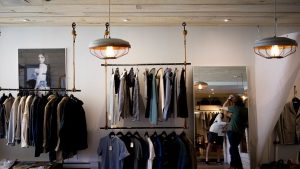
The study found a huge disconnect between shopper demands and what retailers deliver. The areas covered span the retail environment, social media, personalisation and the use of advanced technologies such as AI, VR and chatbots.
Mind the gap
There have been significant investments in enhancing the customer experience online and in store. However, retailers are not able to keep up with rapidly changing customer expectations and this is creating a huge disconnect.
- 73 percent of retail executives believe that the overall environment in retail stores has become more inviting in the last 5 years. Only 45 percent of consumers agree, with 19 percent stating it has become less inviting.
- 80 percent of retail executives believe that consumers would feel more welcome if in-store staff interacted with them more. Less than half (46 percent) of consumers agree, with 28 percent noting they would feel more annoyed.
- 79 percent of retail executives believe chatbots are meeting consumer needs. Two thirds of consumers (66 percent) disagree. Respondents noted that chatbots are currently more damaging to the shopping experience than helpful.
- Almost all (98 percent) retail executives think that engaging with customers on social media is important to building stronger relationships. Only 12 percent of consumers think it has a significant impact on the way they think or feel about a brand.
Personalisation is proving a problem
Almost half of consumers (42 percent) and almost two thirds of millennials (63 percent) – noted that they would pay more for improved personalisation. Only 11 percent of retail executives believe that their staff have the tools needed to give consumers a personalised experience. The gap between consumer demand for improved personalisation and retailer’s ability to deliver is damaging the customer experience.
- Eighty percent of consumers do not feel they are provided with a personalised shopping experience both in-store and online.
- Fifty-eight percent of consumers are uncomfortable with the way stores use technology to improve personalisation in their shopping experience. Almost half (45 percent) reported negative emotions when they receive personalised offers online.
- The majority of consumers (53 percent) felt negative emotions the last time they visited a store. Only 39 percent feel confident in retail stores today.
New technologies not the silver bullet
Retailers are aware that they don’t have the tools and information needed to meet rapidly changing customer expectations. However, the study found that hyped technologies such as AI and VR are not yet the answer.
- Ninety percent of retailers are not confident the use of advanced technologies to customise the shopping experience meet consumer’s needs.
- 79 percent of retailer executives believe having VR and AI in stores will increase sales. Only 14 percent of consumers believe the technologies will have a significant impact on their purchase decisions.
- Almost all (98 percent) retail executives believe VR and AI will increase foot traffic. Forty-eight percent of consumers do not think VR or AI would have any impact on how likely they are to go into a store.
A simple and streamlined future
Despite the popularity of online shopping, physical stores aren’t going anywhere. As long as retailers keep the experience easy and seamless, consumers will keep shopping in store.
- Nearly all (97 percent) of consumers agree there is a need to go into a physical store to purchase items. The majority (70 percent) believe the most appealing retail stores have features that simplify and streamline the shopping experience.
- The top features attracting consumers to physical stores are options consistent with online (36 percent). Simpler store layouts (35 percent). Staff orders on mobile device (29 percent). In-store kiosks that allow consumers to purchase products that are unavailable in-store (23 percent).
- The technology advancements that consumers want to utilise when shopping in store or online are self-checkout kiosks (38 percent). Virtual reality try-on (23 percent) and mobile payments (15 percent). Only 5 percent of consumers selected robots and chatbots as the technologies they most want to utilise.

Rhodus adds, “The results of this survey show that while the retail industry is often considered to be at the forefront of consumer experience innovation. There’s still a long way to go to meet shopper expectations. What this means is the opportunity for retailers to improve the relationship with consumers is tremendous.”
Enterprise Times: What this means for retailers?
This report highlights the gap between retailers and consumers and the role new technologies can play in the shopping experience. However, another study recently carried by Visualsoft suggests retailers are jeopardising revenues by not prioritising basic online customer experience techniques. The poor design of the online shopping basket. Retailers failing to fully optimise their onsite search function or poor page load speeds has impacted on consumers online experience.
Hence, no surprise about the disconnect with the emerging technologies designed to enhance the retail virtual space and user experience. However, retailers have to get the basic right with the current online experience. They need to go back to basics, before they jump on the bandwagon of exotic and interesting advanced technologies.

























